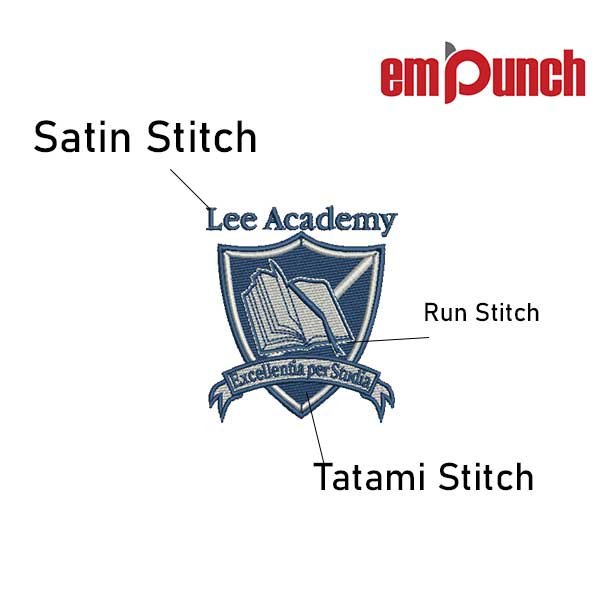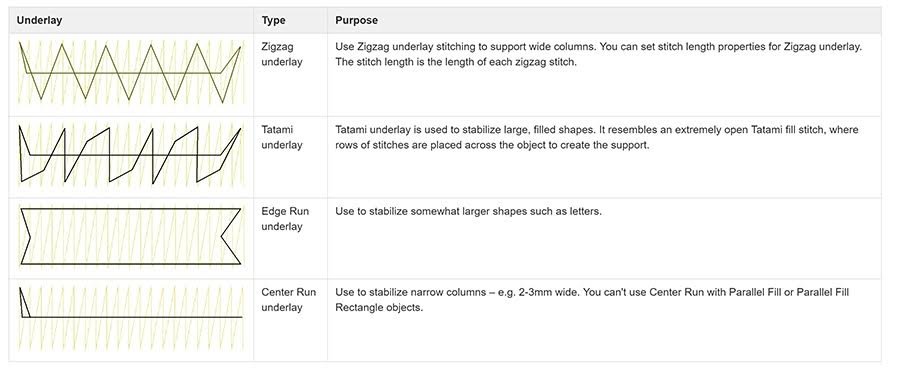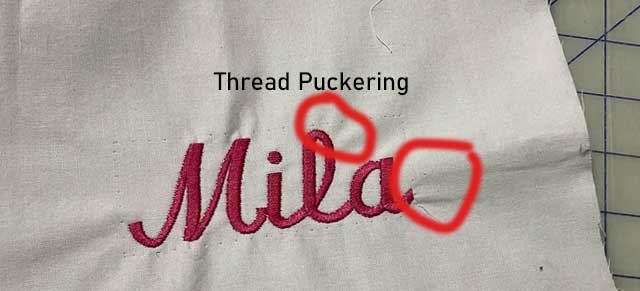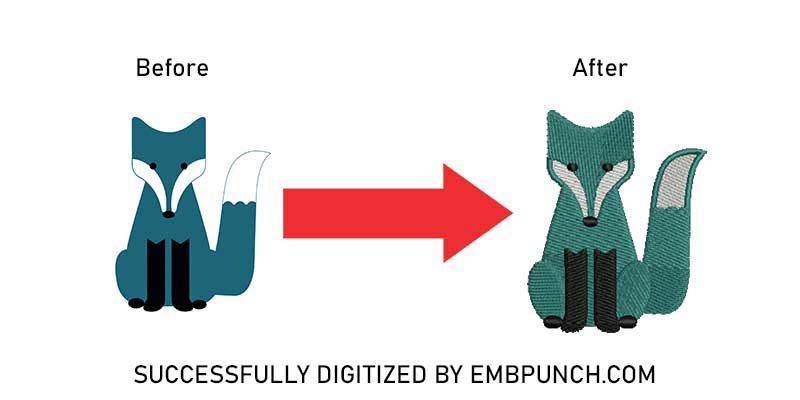Table of Content
1. Introduction.
2. Basics of Embroidery Digitizing.
3. Common mistakes in Embroidery Digitizing.
4. Fabric and Thread Choices.
5. Software Tools and Digitizing Techniques.
6. Quality Control and Testing.
7. Common Embroidery Machine Problems.
8. Tips for Efficient and Cost-Effective Digitization.
9. Client Communication and Expectations.
10. Showcasing Successful Embroidery Digitization Projects.
11. Trends and Innovations in Digitizing Embroidery.
12. Conclusion.
13. Additional Resources.
Introduction
The unsung heroes of complex design implementation emerge as embroidery digitizing services in the enchanted world where creativity and technology coexist harmoniously. As embroidery moves from the world of fantasy to digital reality, it goes through a massive transition. This manual is your key to understanding the fascinating process of digitizing embroidery, a process characterized by accuracy, customization, and a remarkable combination of artistry and creativity. Join us as we explore the entirety of embroidery digitizing services along with unearthing common mistakes that even professionals end up making regarding embroidery digitizing.
Basics of Embroidery Digitizing
The art of converting alluring designs into a digital language that embroidery machines can easily understand and reproduce is at the heart of needlework digitalization. The very heart and soul of embroidery digitizing is this artistic creation. Before we can begin our exploration of the complex world of embroidery digitizing services, we must first understand the fundamental ideas that underlie this craft. A firm grasp of these foundations is essential for success in this field.

Stitch Types:
The wide variety of stitch types at your disposal is one of the fundamental ideas in embroidery digitizing services. Similar to a painter's palette, each of these stitches has a special purpose and attribute.
Satin Stitches:
These streamlined, smooth stitches are good for generating opulent, lustrous surfaces, making them ideal for logos and typography.
Fill Stitches:
By filling in spaces with recurring patterns, these stitches serve as the design's building blocks. They work incredibly well to add texture and dimension.
Running Stitches:
These straightforward, continuous stitches are great for outlines and fine detailing.
Stitch Density:
Picture a canvas and each stitch as a brushstroke used by an artist. It refers to the number of stitches per square inch and is crucial to the embroidery's beauty and toughness. Finding the proper balance ensures that the design is both aesthetically pleasing and durable.
Underlay Stitches:
Visualize underlay stitches as the sturdy base of a structure. To give stability and avoid cloth puckering during embroidery, these introductory stitches are put carefully beneath the layers of the design that are visible to the eye. It's essential to know how to use underlay stitches if you want your embroidery to look clean and polished.
Pull Compensation:
It's critical to take into consideration this innate property since textiles stretch and flex during embroidery. Pull compensation is the art of modifying the digital design to account for the movements of the fabric. This guarantees that even on difficult fabrics, the finished embroidery will maintain its original shape and detail.
Common mistakes in Embroidery Digitizing
As we go out on the route of embroidery digitizing services, we must recognize that each step has its share of difficulties. We'll discuss some of the most typical mistakes that can derail your digitization efforts in this section. You'll be more equipped to produce faultless embroidered designs if you are aware of these difficulties and can figure out how to overcome them.
Underestimating Design Complexity
Underestimating design complexity is one of the common obstacles in the field of embroidery digitizing services. It's a frequent misperception that digitizing all designs is simple. But nothing could be further from the truth than this. Even though they seem straightforward on paper, some designs can be extremely complex and difficult to precisely digitize.
Insufficient Stitch Density
The importance of stitch density directly affects the aesthetic appeal and durability of your embroidered products. It takes a certain amount of skill to achieve the ideal balance of stitch density. A pattern with insufficient stitches may appear sparse and lack the depth and texture necessary to be visually appealing. On the other hand, too many stitches can cause stiffness and distortion, making the design impossible to recognize.
Poor Fabric and Thread Choices
Selecting the ideal thread and fabric is comparable to choosing the ideal color scheme for a work of art. An embroidery project's success or failure can be determined by these decisions. The effects of choosing the wrong thread or fabric might include everything from color bleeding and puckering to fraying and general design degradation.
Fabric and Thread Choices
The art of choosing the ideal thread and fabric is crucial to producing a work of art in the field of embroidery digitizing services. Your decisions have a huge impact on how things turn out in this area. Let's explore more on how to make wise choices that improve your digital designs.
Selection of Threads
There is more to choosing thread than simply selecting a spool from the store. It's a complex decision-making process that needs thoughtful evaluation of a number of aspects, including:
Thread Type:
The three most popular thread kinds are polyester, rayon, and cotton, each of which has unique properties. Polyester threads are a dependable option for a variety of applications because of their strength and colorfastness. Rayon threads have a delicate, opulent sheen that is perfect for giving designs a touch of class. Contrarily, cotton threads offer a timeless, organic aesthetic and are frequently preferred for their softness and comfort.
Thread Weight:
Another important consideration is the thread's thickness. Bold, striking designs are produced by thicker threads, which are frequently indicated by a greater denier. For designs that call for a bold, textured appearance, they are ideal. Contrarily, thinner threads with fewer deniers provide the dexterity needed for fine detailing, enabling you to precisely capture even the most delicate design components.
Thread Color:
The foundation of authentically recreating a pattern is accurate color matching. Your digitized needlework will match the intended colors and tints of the original artwork if the colors are carefully chosen. Your keen eye and color-matching abilities will be useful in this situation.
Fabric choice:
The fabric that you'll choose for your embroidery digitizing project will serve as the canvas for your creative work. Making the right decision is crucial because it has a significant impact on the overall quality of your work.
Fabric Type:
Various textiles have unique textures and properties, from satin and silk to cotton and denim. Every type of fabric necessitates a different digitizing strategy. Achieving outstanding outcomes requires a thorough understanding of the special characteristics of your chosen fabric. For instance, satin fabrics need special care to keep a smooth surface, but cotton textiles may absorb more thread.
Software Tools and Digitizing Techniques
It takes skill to grasp the software tools and embroidery digitizing processes available to you. What you should know to succeed in the field of embroidery digitizing services is detailed below:
Software for Digitizing
Software for digitizing embroidery functions as the process's beating heart. Popular options among the wide range of alternatives include Wilcom, Hatch, and Tajima DG/ML. These applications serve as the digital canvas on which your artistic vision is realized. They give you the ability to precisely and artistically develop, edit, and perfect your digital designs.
Methods for Accuracy
Precision is king when it comes to embroidery digitizing services. Mastering a number of essential skills is necessary to get clean and accurate outcomes.
Digitizing for Different Fabric Types:
Different materials require different approaches because not all fabrics are created equal. For example, scanning cotton cloth may require modifications to account for its absorbent nature, but digitizing satin demands skill to maintain a smooth surface.
Making Underlays:
In needlework, Underlay Stitches are the unsung heroes. These first stitches give the fabric support and stop the fabric from puckering. Achieving professional results requires knowing when and how to construct underlays.

Managing Stitch Angles:
The stitching pattern you use can affect how your design will turn out. You can control the texture and aesthetic impact of your embroidery by mastering stitch angles.
Quality Control and Testing
It's crucial to put your digitized design through strict quality control and testing procedures before sending it to the embroidery machine:
Embroidery Testing
The pattern is really stitched on a piece of fabric during a sew-out test. This procedure aids in locating any stitch location, density, or tension problems.
Analyzing and Making Corrections
Check the sew-out for flaws in great detail. Return to the digitizing software and make any necessary adjustments if you see any issues.
Common Embroidery Machine Problems
Even digitizers who are well-prepared for the task could run into problems with their embroidery machines. It is essential to comprehend these typical issues and how to troubleshoot them:
Thread Snips
The embroidery technique may be hampered by thread breaks. Look for thread damage, tension problems, or blockages in the thread path.
Misalignment
Hooping or frame positioning difficulties may lead to misalignment. Before beginning a design, make sure the cloth is tightly hooped and correctly positioned.
Puckering
When the fabric creases or warps while being embroidered, puckering happens. Puffing can be avoided by modifying the design's density and employing the proper stabilizers.

Tips for Efficient and Cost-Effective Digitization
Efficiency and affordability must be taken into account, especially if you plan to sell embroidery digitizing services. Here are some suggestions to increase your effectiveness and profit.
Workflow Improvement
From design intake to final quality control checks, standardize your processes to streamline your operation.
Processing in Bulk
To save time and resources, digitize several designs at once. Costs can be considerably decreased by effective batching.
Automation
Investigate the automation features in your digitizing program to accelerate routine processes and minimize human labor.
Client Communication and Expectations
A successful embroidery digitizing service is built on effective client communication. Think about the following factors to guarantee consumer satisfaction:
Recognizing customer expectations
Spend some time comprehending your client's goals. To match your digitizing with their expectations, ask questions, offer mock-ups, and clarify any misunderstandings.
Attainable timelines
For your clients, establish precise, reasonable deadlines. In order to surpass their expectations, under-promise and over-deliver.
Process of approving designs
Before beginning embroidery, involve clients in the design review process to make sure they are happy with the digitized version.
Showcasing Successful Embroidery Digitization Projects
The goal of embroidery digitizing services is to showcase your knowledge to the world in addition to perfecting your technique. Your portfolio serves as your blank canvas and showcases the range of your skills and abilities. In this section, we'll examine the tactics of exhibiting embroidery digitization projects that are effective while highlighting your individual skills and capabilities.
Creation of a portfolio
Your portfolio serves as a visual journal of your experience learning about embroidery digitizing services. It's a carefully curated display of your best work, not just a collection of pictures.
Before-and-After Illustrations:
Potential customers may be persuaded by your digitization's ability to transform a design. Include comparisons of the before and after to show how you might improve a design through digitization. Draw attention to the enhancements in texture, detail, and overall quality.

Customer Reviews
Client testimonials carry a lot of weight because they represent the opinions of your happy consumers. Include consumer testimonials expressing their satisfaction with your embroidery digitization services. Potential customers may be convinced of their trustworthiness and trust by their pleasant experiences and recommendations.
Trends and Innovations in Digitizing Embroidery
Keeping a competitive advantage in embroidery digitizing requires staying abreast of market developments and innovations:
Sustainability
Think about sustainable techniques, such as cutting down on thread waste and utilizing eco-friendly materials.
Features of Advanced Software
Discover the newest features of digitizing software, including 3D embroidery and AI-assisted digitization.
Personalization
The use of customization and personalization in embroidery is on the rise. Offer special and creative embroidery digitization services. Modern consumer culture has adopted personalization as one of its distinguishing characteristics. The demand for distinctive and personalized goods has never been higher, from monogrammed towels and custom-made clothing to embroidered presents bearing a recipient's name.
Conclusion
The fusion of art and technology in embroidery digitizing services provides countless potential for creativity and skill. You can start your journey toward success in the field of embroidery digitizing by avoiding frequent blunders, understanding software and procedures, and remaining aware of market trends.
Additional Resources
https://www.embroidery.com/Machine-Embroidery-Discussion-Forums
https://wilcom.com/?setCurrencyId=2
https://www.thesprucecrafts.com/top-embroidery-blogs-1177524
https://embroiderersguild.com/


